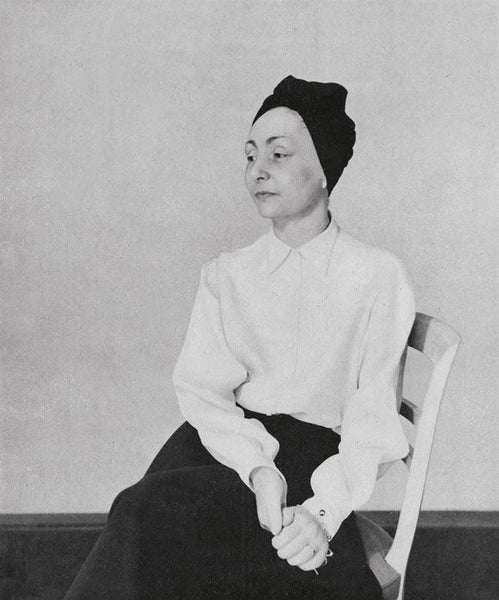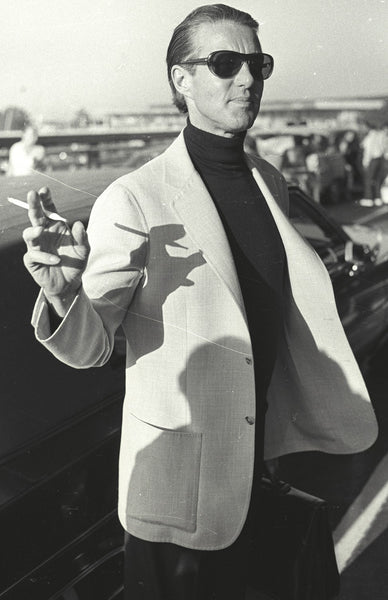Designer Spotlight: Martin Margiela

Martin Margiela was born in 1957 in Genk, Belgium. Although not an official member of the avant garde “Antwerp Six,” Margiela graduated from from Antwerp’s Academy of Fine Arts in 1979. After graduation Margiela moved to Paris, where in 1984 he began working for Jean Paul Gauliter. Margiela left Gaultier in 1987 and founded his own label in 1988; in 1989 he shocked the world with his first collection. Years before Marc Jacob’s 1993 Perry Elis grunge triumph/fiasco, Martin Margiela redefined the meaning of luxury, with deconstructed elements and recycled fabrics with raw finishes mixed and polished into sleek, inventive designs.
Unexpectedly, in 1997 the radical Margiela was appointed creative director of the women’s line at Hermes, a position he kept until 2003. Maison Martin Margiela went public in 2002, with the Diesel Group acquiring a majority of the shares. Margiela’s success continued, and in 2006 he exhibited his first haute couture collection on the behest of the the Chamber Syndicale. The event was a considered huge honor, as the collection was made a part of the official Paris schedule. In 2008 a 20 year retrospective of the house was hosted at Antwerp’s Fashion Museum.
In the fall of 2009 it was revealed that Marcela had resigned as creative director of his eponymous fashion house. This move is believed to be Margiela’s response to the increasingly commercial direction of his brand, steered by the Diesel Group’s influence. The house is currently directed by an anonymous collective of designers.
Martin Margiela is a notoriously private person. There are very few photos of him on the web. Margiela waits backstage behind the catwalk and moves covertly through events thrown to honor him. Margiela only responds to faxes.
Although he was stated to have left his house in 2009, it was insinuated that he had been gone for some time.
Despite there being little information of him available to the public, one can tell that Margiela is a true character. Margiela's private nature and forward-thinking design makes the Belgian couturier one of fashion's true eccentrics.
Margiela’s designs are enigmatic and unconventional but also undeniably precise and particular. In an 1983 interview with “Sphere” Margiela acknowledges the early influences of designers Paco Rabanne and Andre Courreges. Margiela channeled the futuristic edge of these designers into his own unique, radically progressive, calculated, discretionary vision.
His renowned 2006 Fall / Winter collection was influenced by vintage fabrics and interior design, and was described by Vogue’s Sarah Mower as exhibiting “surrealist-utilitarianism.” Margiela has challenged the runway format several times and has made a further spectacle of the catwalk by frequently concealing the faces of his models, staging shows in public spaces (he once held a 1989 show in a Paris playground and allowed the children there to interact with the models) and unused, dilapidated spaces (such as abandoned warehouses, subway cars, and an abandoned Paris metro station in 1992). Margiela has had his models wheeled out on carts, has had them sit with the audience, and for the entire year of 1998 he replaced all his models with life - sized marionettes. He has even forcing the audience to seat themselves in accordance with their assumed importance.
Margiela is a true artist, there are few designers that can provoke passionate, disparate reactions from fans and critics. The counter culture attitude with which he challenges the fashion industry, cherishes anonymity and shuns fame is one that has inversely created a mythology elevating his celebrity.
Also in Adore MRS. Couture

Designer Spotlight: Madame Gres

Designer Spotlight: Roy Halston Frowick
Halston was thrown into the limelight when Jacqueline Kennedy wore his pillbox hat to John F. Kennedy’s inauguration. Soon Halston expanded into women’s wear, creating both couture and ready-to-wear fashion catering to the fashionable and elite jet set. Halston also accepted the honor of designing the 1976 US Olympic team uniforms, redesigned Braniff Airlines’ uniforms in 1977, and created uniforms for the New York Police Department and the Girl Scouts in 1978.
Halston was innovative, using slinky knit material and ultrasuedes, and introducing a halter dress design that elongated a wearer’s silhouette. He pioneered the sensual and soft draped looks associated with disco and his beloved Studio 54.

